An Innovation That Helps Mothers Combat Child Malnutrition
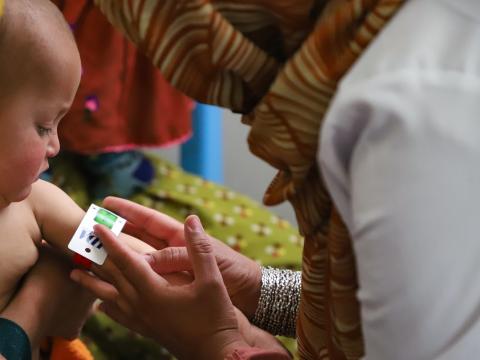
By Ria Mohammad Rehaa, Communications Manager
“Previously, I would feed my children only three times a day together with other family members,” says Zarmina, raising a spoonful of chickpeas cooked by a nutrition nurse to her 18-month-old child. “And we would not prepare special food for our young children. But now, we know how often to feed our children and how to cook meals specifically for them.”

In the remote villages of Dawlatyar district in Ghor province, feeding a child is a daily struggle. Here, where poverty, climate shocks, poor hygiene, preventable diseases such as diarrhoea and pneumonia, and limited access to healthcare are compounded by a lack of knowledge about proper nutrition, ensuring children are well-fed goes far beyond having enough food—it is a matter of knowledge, access, and survival. Across Afghanistan, an estimated 3.5 million children are facing acute malnutrition. In places like Ghor, where families must often travel hours to reach even the most basic health services, these figures are not just statistics—they represent real lives at risk and futures hanging in the balance.
To support mothers to combat this preventable threat to children’s lives, World Vision Afghanistan recognised that while food availability is vital, the way food is prepared, how frequently children are fed, and mothers’ understanding of nutrition are equally critical in the fight against malnutrition. In response, World Vision introduced an innovative solution in Dawlatyar: food demonstration sessions. As part of the nutrition interventions delivered through World Vision’s healthcare centre in the district, these sessions are designed to show mothers how to better nourish their children using locally available ingredients.
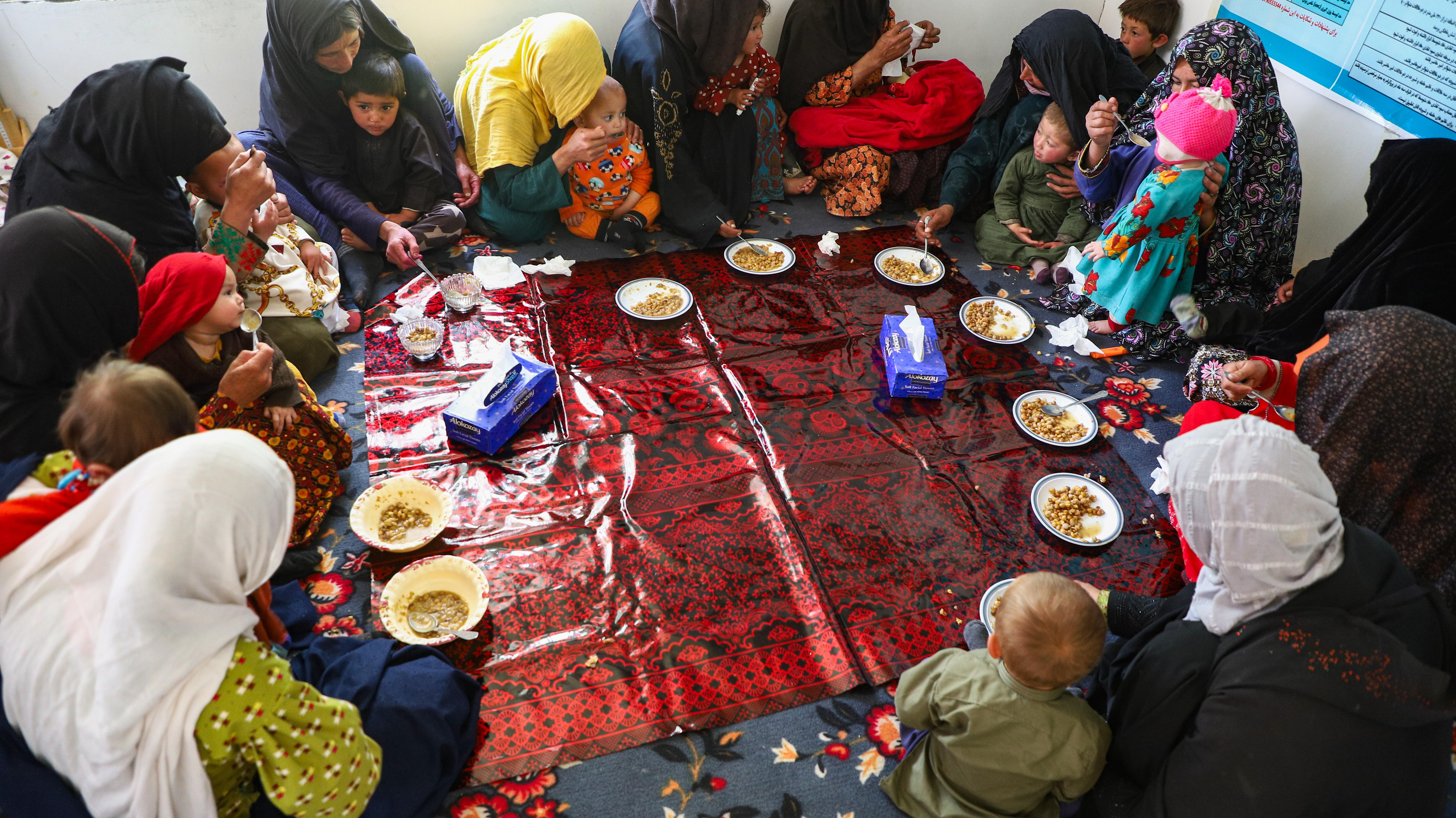
The idea was born from a simple but powerful observation. “When we advised mothers to prepare nutritious, soft meals like shoola [a local porridge] just for their children,” says Samiullah, a nutrition supervisor from Ghor, “many would ask: But how do we cook it for children? That’s when we realised—advice alone wasn’t enough. We needed to show them.”
At first, each session invited one mother to bring whatever food items she had at home—such as lentils, chickpeas or beans—and a nutrition nurse would demonstrate how to turn them into nutrient-rich, child-appropriate meals using locally available ingredients. In subsequent sessions, other mothers would bring different items, building a shared learning experience rooted in local resources. Now held twice a week, each session, dedicated to a specific village, invites ten to fifteen mothers with their children and focuses on preparing a different nutritious meal, while teaching not only cooking methods for age-appropriate meals, but also the importance of feeding frequency and how to make the most of available household ingredients.
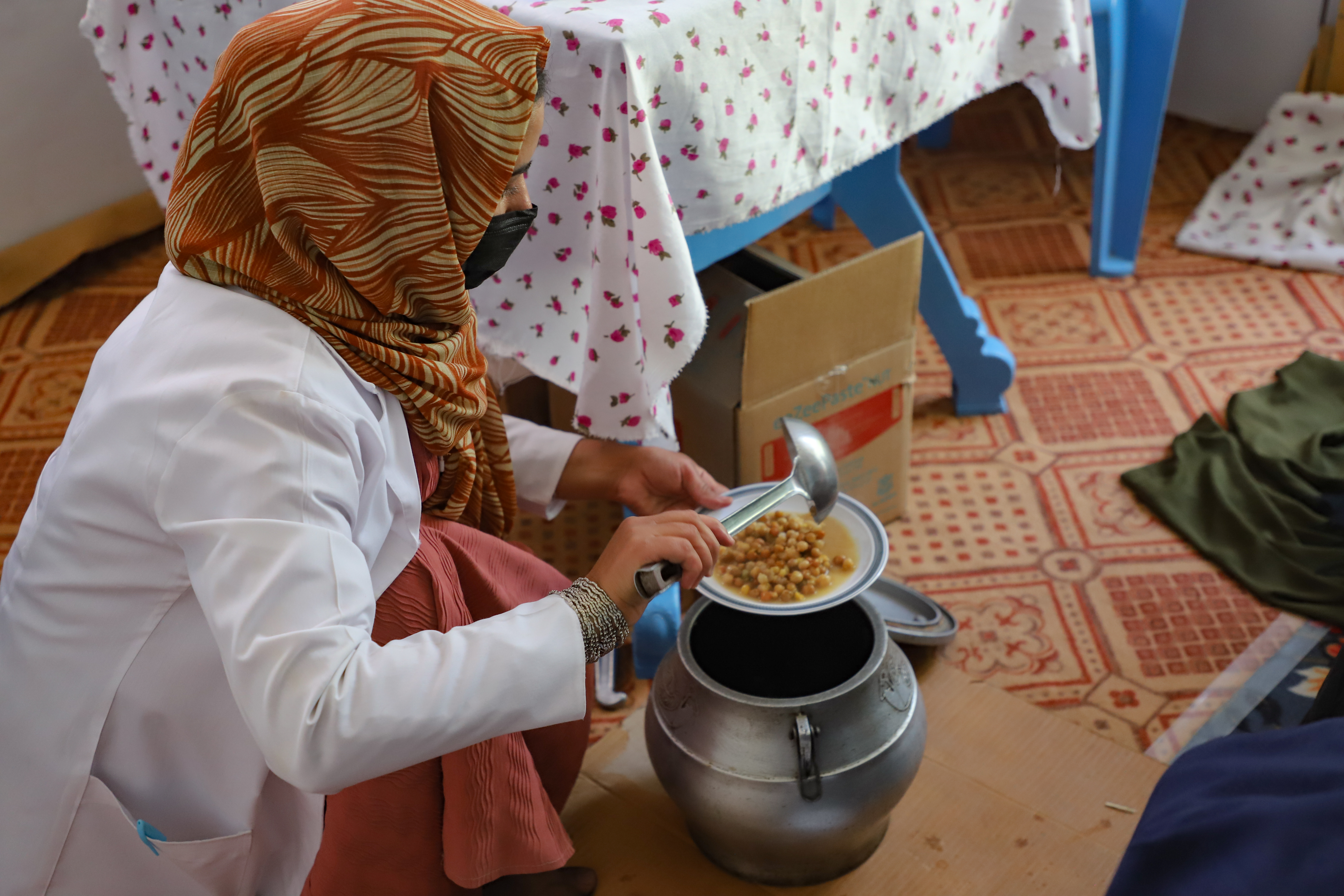
The sessions quickly gained popularity, and World Vision began supporting the initiative by supplying essential food items for the demonstrations to ensure every mother, regardless of economic status, could participate and practise.
“When children were hungry between meals, they were often given just a piece of dry bread,” explains Samiullah. “That was never sufficient to meet their nutritional needs. Today, mothers are feeding their children five to six times a day, and most importantly, with meals specially prepared for them that mirror the quality of RUSF [ready-to-use supplementary foods].”
The food demonstration model is not expensive or complex—but it is powerful. It taps into local culture, uses available ingredients, and empowers mothers with knowledge and practical skills. These mothers are not just feeding their children—they are nourishing a healthier future. In a community with limited access to healthcare and few external resources, they are filling a critical gap and giving families knowledge to fight malnutrition in their own kitchens.
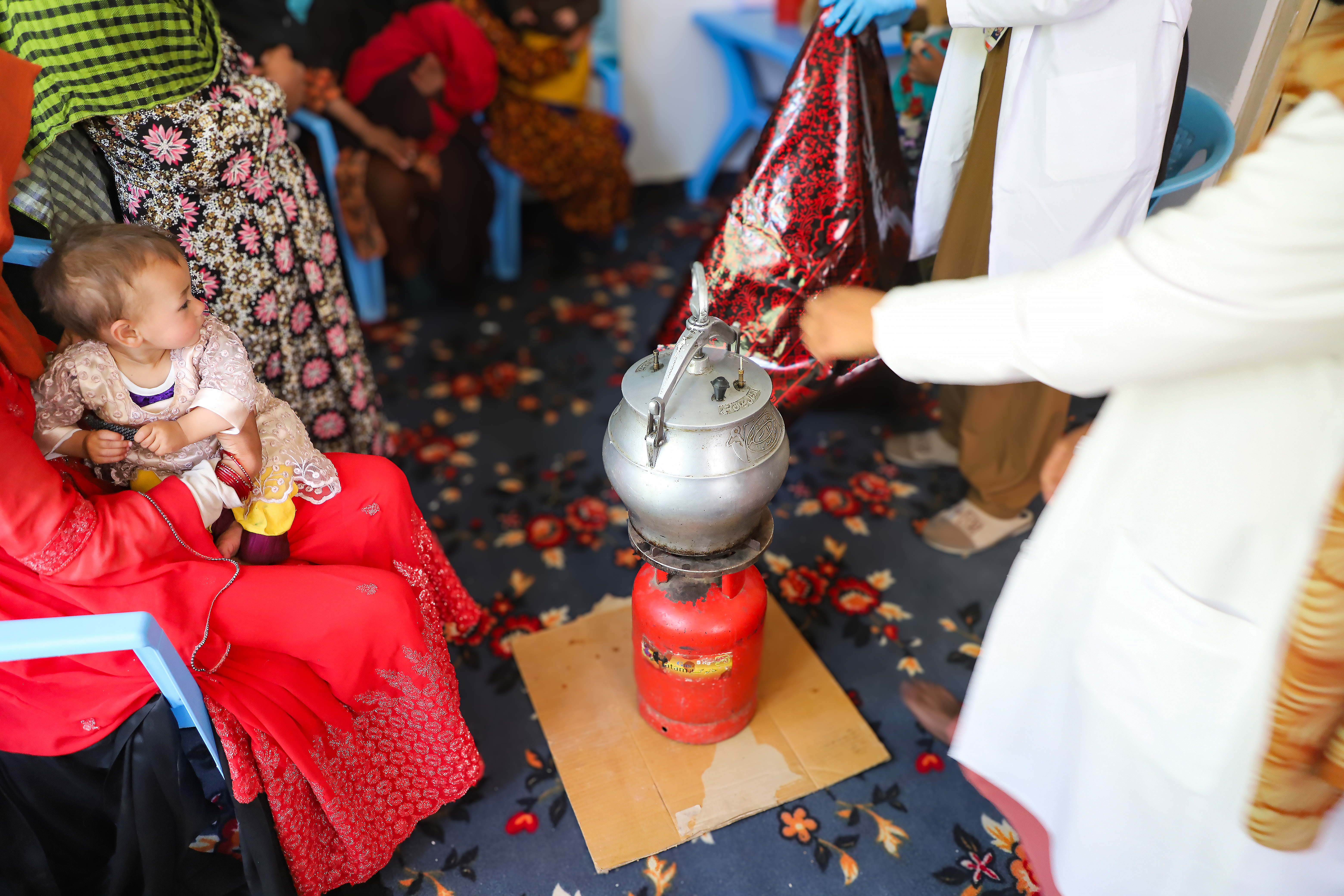
World Vision established its health centre in Dawlatyar with a monthly target of screening 77 children for malnutrition and treating 17 cases of Moderate Acute Malnutrition (MAM) and seven cases of Severe Acute Malnutrition (SAM). However, given the high levels of malnutrition in the area, the team often supported numbers well beyond these targets. Serving several villages with a combined population of over 5,760, the centre helped families tackle malnutrition head-on. Within a year, the malnutrition rate dropped to the extent that weekly targets were not only met but often exceeded. During this period, the nutrition team treated 401 cases of MAM and 79 cases of SAM. “If we hadn’t intervened early,” says Samiullah, “we estimate the number of severe cases could easily have doubled.”
The treatment success rate now stands above 90%—a significant improvement for such a remote area.
Perhaps even more encouraging is the shift in behaviour. Internal monitoring indicates that over 70% of participating mothers have improved their understanding of appropriate child feeding practices, and the local malnutrition rate is steadily declining. “The graph has changed,” Samiullah notes with quiet pride. “We can see a clear difference in malnutrition rates. This is not just theory—it’s visible in the community.”
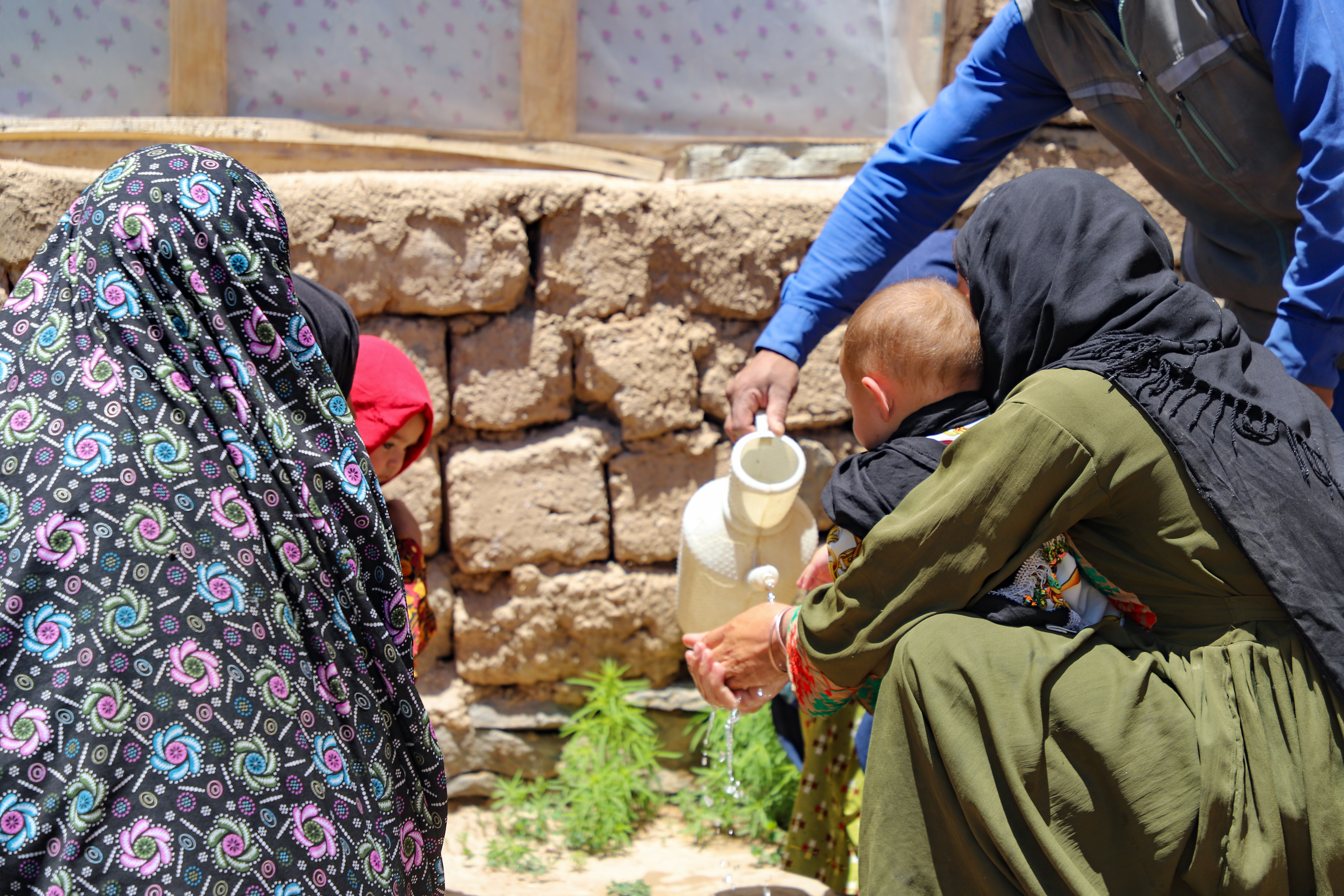
The health centre also offers a range of essential services, including vaccinations, outpatient care, midwifery, mental health and psychosocial support (MHPSS), and health education, alongside targeted nutrition assistance. As part of its nutrition interventions, children with complicated cases of SAM and MAM are referred to partner clinics, with support provided for transportation and follow-up care.
As Afghanistan continues to face one of the highest rates of child malnutrition in the world, low-cost, community-led solutions like food demonstrations offer a model of hope.